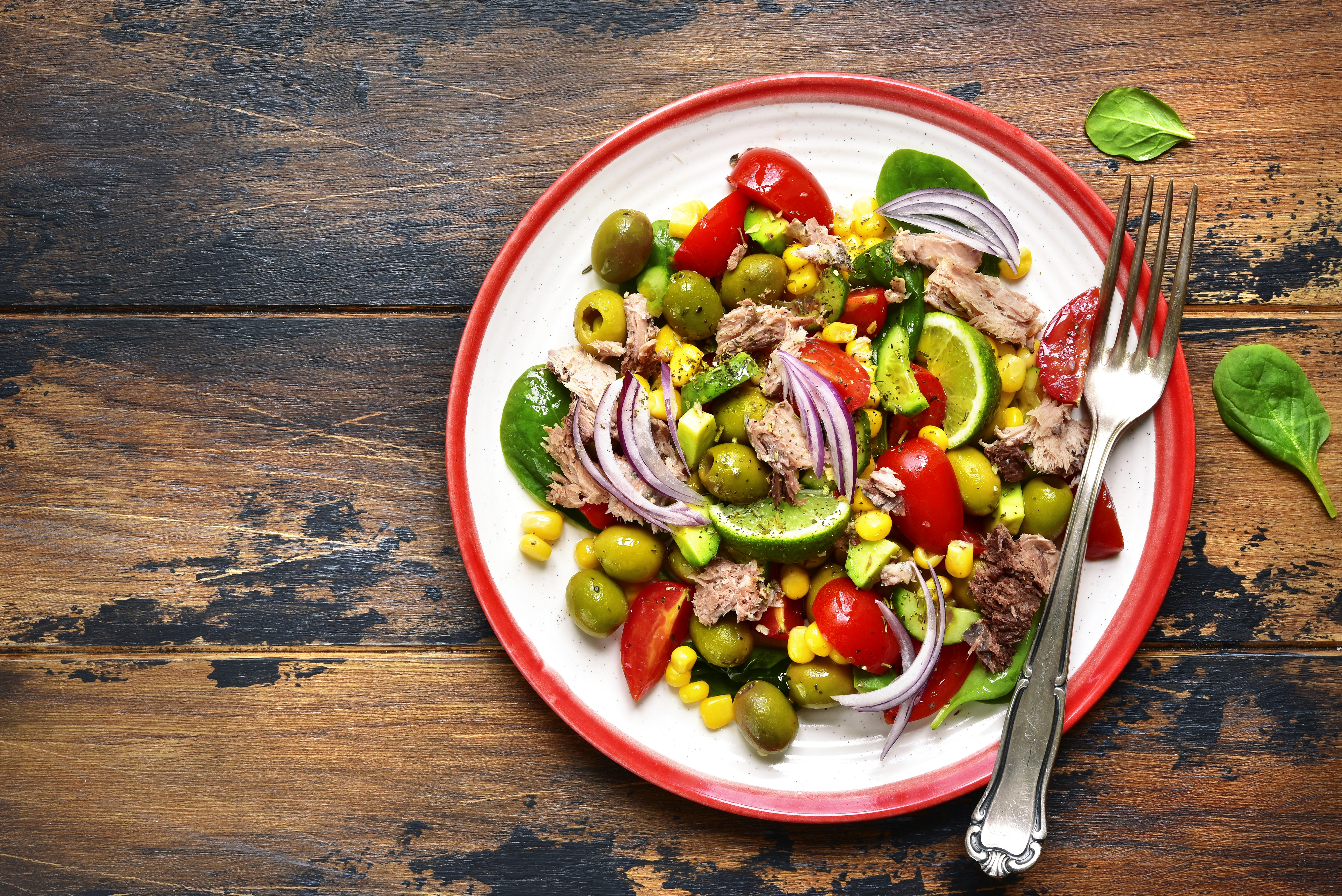Bottom line summary:
The Bredesen Protocol™ diet is Nutritional Ketosis plus Time-Restricted eating of healthy, nutrient-dense foods.
~~~~~~~~~~~~~~~~
KetoFlex 12/3 means eating all food during a 12-hour window, and being sure to not eat any food within three hours going to bed. For example, if you go to bed at 10 PM, be sure to stop eating by 7PM. No bedtime snacks! Then back-calculate the 12 hour eating window to start at 7 AM. Many people already do this spontaneously, so for most folks it is easy to implement. This is to give the metabolism a chance to bring blood sugars down to their lowest levels possible.
The Bredesen Protocol™ diet overall is stressed to be nutrient dense, and largely plant-based. While meat is certainly allowed, it is approached as if it were a condiment rather than the main course, with the general rule of thumb to obtain 1 gram of protein for each kilogram (2.2 pounds) of your weight.
Achieving nutritional ketosis is more challenging for those who have never tried a low-carbohydrate diet. Combined with moderate exercise, the body can switch its metabolism to fat-burning, rather than to remain in an insulin-dependent/carbohydrate-storing state that promotes inflammation, insulin resistance, and Alzheimer’s disease. In its simplest form, it is a very low carbohydrate diet, with moderate protein, and healthy fats .
Healthy fats can be chosen based on genetic information, for example, people who are ApoE4 positive should avoid saturated fats and transition to the more “Mediterranean” or monounsaturated fats instead (such as olive & avocado oils). It matters less if you do not have the ApoE4, and coconut oil is a plentiful option. Special use of MCT oil is addressed in the book, for combatting cravings or energy slumps that might be felt.
The carbohydrate sources are advised to come from only low-glycemic index foods (aim for under 35), mostly non-starchy vegetables, and to include raw and cooked vegetables, in as many colors as possible, ie, “eat the rainbow” so that polyphenols and antioxidants are supplied.Of course, High quality protein sources such as wild caught salmon, grass fed/grass finished beef, and pastured chicken and their eggs are recommended because they have a better Omega 3 to Omega 6 ratio, thus reducing their inflammatory effect on the body. Caution is advised regarding fish, as the longer-lived species such as tuna and swordfish are highest in mercury levels. The “SMASH” fish are preferred (Salmon, Mackerel, Anchovies, Sardines, and Herring).
To decrease inflammation, avoid gluten and dairy as much as possible. As well, boycott pre-processed foods; whole foods should be consumed. This same concept applies to fruit juice, which is processed, when compared with whole fruit. The best whole fruits are wild, colorful berries, Citrus fruits, avocados, and tomatoes. Be careful if using fruits in smoothies, because their glycemic index can be very high, especially when blended, releasing a large sugar load and that is rapidly available for absorption into your bloodstream, sending blood glucoses wayward. Another cause for concern is combining simple carbohydrates (high Glycemic index food) with saturated fats… be sure to have fiber first to slow the sugar absorption to decrease the resulting inflammation from insulin spikes.
To break down and eliminate toxins from our bodies,there are certain plant families and foods that help us do that, including the Cruciferous vegetables, cilantro, avocado, beets, ginger, garlic, lemons, olive oil, and seaweed. Cilantro is easy to grow in a container, so buy some seeds and get started today!
Prebiotics (types of food fiber that colon bacteria eat, such as onion & jicama) and Probiotics (especially fermented foods like live culture sauerkraut and kimchi) are good to add. Digestive enzymes can be helpful if you experience acid reflux, have reduced stomach acid, or if you’re older than 50 or your lab values show elevated inflammation.
Dr. Bredesen recommends supplements for optimizing cognition and vitamin status for everyone with any brain difficulties. These are listed on page 187 of his book. The following page also gives daily recommendations for herbal support of nerve cell function and growth.
Food preparation is advised to be better with shorter cooking times, lower temperatures, and moist heat rather than frying, grilling, searing, broiling, and roasting. Cooking changes the chemical structure of many foods, damaging them, turning them into AGE’s (Advanced Glycation End products), which in turn can induce inflammatory responses. Don’t eat charred or burned food.
Nutritional ketosis is monitored easily at home, with a Ketone meter, which operates in the same way as a blood glucose meter does. There are 2 popular models available, and a each brand is associated with its own test strips. The goal result to see on the meter is a level between 0.5 and 4 mmol/L. A meter called Precision Xtra, and one called Keto-Mojo , both measure glucose and ketones ( different test strips required for each test ).
It is said that the Precision Xtra System and it’s Ketone test strips are cheaper from online Canadian sources. The keto-mojo meter by itself is $49.95 as of this writing. The Precision Xtra meter at this time is approximately $40 on Amazon. The cost of test strip refills should be reviewed before deciding which meter to purchase.
Now we’d like to hear from you. Have you tried the Keto-flex 12/3? What were you able to accomplish with it?

Copyright 2018, Peak Health LLC

